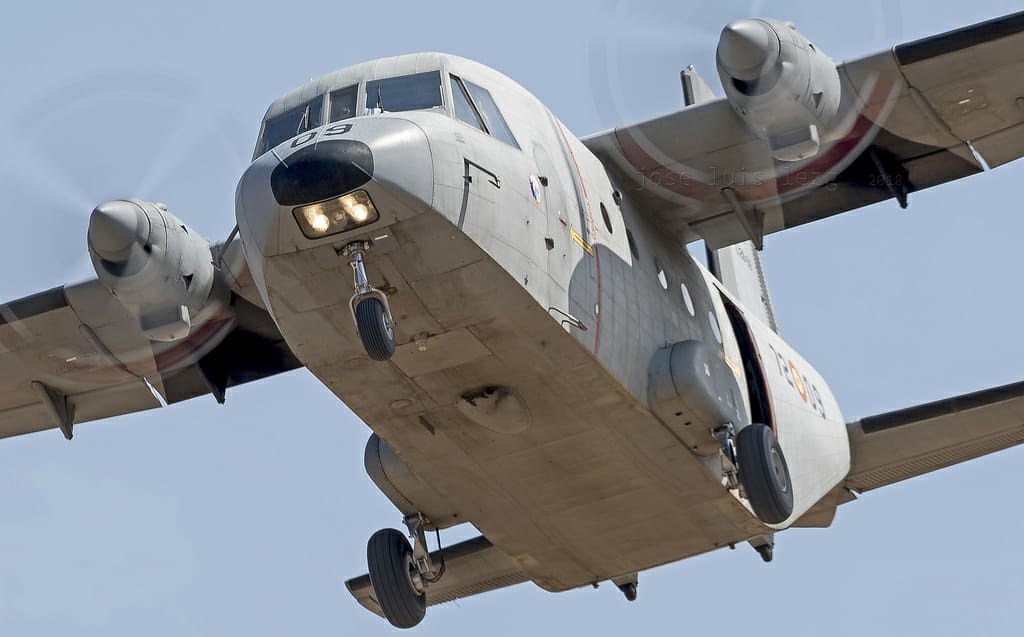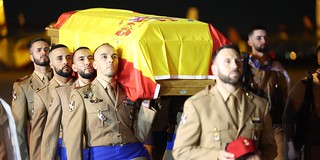CASA C-212 Aviocar: the story of the greatest success of the Spanish aeronautical industry
On March 26, 1971, a model that is still in service in the Air Force and other air forces made its first flight: the CASA C-212 Aviocar.
On March 26, 1971, it made its first flight at the Getafe Air Base
In 1967 the Air Force asked Construcciones Aeronáuticas, S.A. (CASA) a new aircraft to replace the tactical transport aircraft that it had then in service: the Douglas C-47 Dakota and Junkers Ju-52, two models from the Second World War, and the CASA C-207 Azor, a Spanish twin-engine aircraft that made its first flight in 1955. Of the new aircraft, called CASA C-212 Aviocar, two prototypes were made, the XT.12-1 and the XT.12-1. The XT.12-1 made its first flight at the Getafe Air Base on the indicated date, half a century ago today.

Those first two prototypes had Hartzell LHCB3TN-5 three-blade propellers and Garret AiResearch TPW331-5-251C turbines. However, the first series models, called C-212A and T.12B in the Air Force, were equipped with Hartzell HC-B4TN-5CL/LT four-blade propellers.

A small and slow aircraft but very resistant, versatile and with STOL capacity
The Aviocar has a square fuselage and its cabin is not pressurized, so it is not prepared for high-altitude flights. It is not a large plane: its fuselage is 16.2 meters long and has a 20.3 meter wingspan. With a crew of two, it can carry up to 20 soldiers (16 if they are paratroopers with all their supplies) or 12 stretchers or almost 3 tons of cargo, including small vehicles. It is not a fast plane either: it only reaches 370 km/h.

And so, what advantages does this plane have? Well, it has a range of 1,433 kilometers, and is also a resistant aircraftand capable of withstanding adverse weather conditions. In addition, it can operate from short and poorly prepared runways, which is why it is considered a STOL aircraft. Undoubtedly, it is an ideal tactical transport for parachuting and for certain operations. In the 1980s, the US Air Force and Army purchased some for infiltration and exfiltration missions in special operations, as I told you the day before yesterday.

Another characteristic of the C-212 is its versatility. It is an aircraft that can adapt to various missions. In addition to its reason for being as a tactical transport, it has also been used as a VIP transport aircraft, maritime surveillance, search and rescue, reconnaissance, photogrammetry, electronic intelligence and civil cargo and passenger transport. Even A version was made capable of carrying anti-ship missiles on underwing mounts.

The biggest sales success of the Spanish aeronautical industry
Significantly, the CASA C-212 has been the greatest sales success of Spanish aeronautics in all its times, with a total of 483 examples being built. Of these, just over a hundred were built in Indonesia by Indonesian Aerospace. The largest operator has been the Spanish Air Force, which bought 80 examples, most of them already retired from service today, since the Aviocar has been giving way to the most modern tactical transports CN-235 and C-295, also of national manufacture. In total, 31 military operators and more than 50 civilians have chosen the C-212 for their fleets, and it remains in service in many locations.

The Spanish Air Force has used the C-212 in tactical transport missions, maritime surveillance, search and rescue, photogrammetry, reconnaissance and customs surveillance, in the latter case operating several aircraft for the Tax Agency. Currently it is the plane that you can find most easily in museums or monuments: a total of 19 specimens are exhibited in different places. The first prototype, the XT.12-1, can be seen at the Cuatro Vientos Air Museum in Madrid.

The US is going to modernize its own and it is still manufactured in Indonesia
Surely we will still see the old Aviocar serving Spain for a few more years, awakening the memories of so many veteran aviators who have flown with it, of the many parachutists who have jumped from its rear ramp and of all the soldiers who They have flown on board. The Armed Forces of The United States announced in 2020 that they are going to modernize theirs (a sign that they are happy with them) and The C-212 is still manufactured in Indonesia.
---
Main photo: Ejército del Aire.
|
Don't miss the news and content that interest you. Receive the free daily newsletter in your email: |
- Most read
- US F-35A fighters flying with Polish F-16s over Poland at a time of great tension
- The brutal 'touch and go' of a Lufthansa Boeing 747 at Los Angeles Airport
- The deployment of Spanish soldiers of the Regulars and BRILAT near Russian territory
- Eurofighter vs F-35: the opinions of professional pilots on these advanced fighters
- The Harrier IIs of the Spanish Navy fly with F-16 and F-4E of the Hellenic Air Force
- The firearms used by the Pontifical Swiss Guard, the smallest army in the world
- Sierra Army Depot, a huge United States base with hundreds of Abrams tanks stored

 ES
ES







Opina sobre esta entrada: